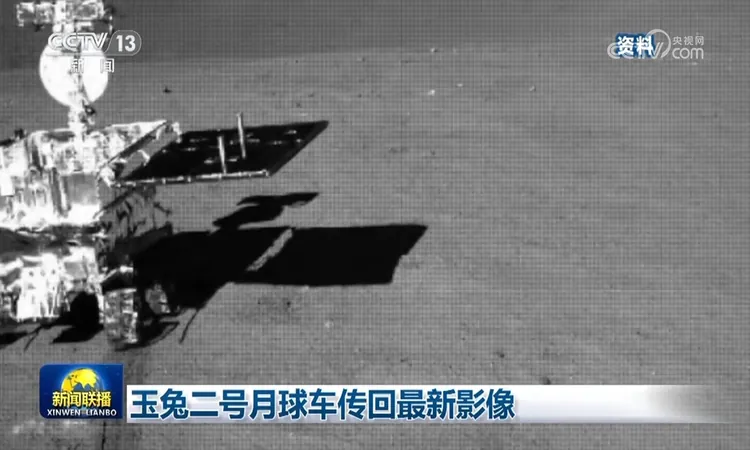
China's Yutu-2 Rover Breaks Records on the Moon's Far Side
2024-09-18
Author: Nur
A Historic Achievement in Space Exploration
In an extraordinary achievement for space exploration, China's Yutu-2 lunar rover has just sent back stunning new images from the moon's far side on September 17, 2024. Coinciding with the Mid-Autumn Festival, a time traditionally celebrated by looking up at the full moon, this transmission offers a unique connection between terrestrial festivities and extraterrestrial discoveries.
Longevity and Distance Covered
Since its landing in January 2019, the Yutu-2 rover has covered an incredible distance of 1,613 meters on the lunar surface, earning the title of the longest-working lunar rover in history. Initially designed to operate for only three months, Yutu-2 has now surpassed an impressive operational timeline of nearly 5 years and 9 months. This remarkable longevity has surpassed any previous lunar rovers sent by other nations, showcasing China’s advanced capabilities in space technology.
The Chang'e-4 Mission and Yutu-2's Significance
Launched in December 2018 as part of the Chang'e-4 mission, Yutu-2—known as Jade Rabbit-2—landed on the moon's far side, becoming the first-ever rover to do so. Its name is inspired by a mythical white rabbit from Chinese folklore, symbolizing a romantic tie between mythology and modern science.
Scientific Contributions
The rover's scientific contributions have been groundbreaking. Yutu-2 has meticulously conducted analyses on the geological makeup of the Chang’e-4 landing zone, including surface morphology, shallow structures, and material composition. The data collected is invaluable for understanding the moon's geological evolution and the history of its crust.
Infrastructure Supporting Lunar Missions
Yutu-2 isn’t alone in this mission; both the Chang'e-3 and Chang'e-4 landers continue to operate on the moon, while two relay satellites—Queqiao and Queqiao-2—ensure smooth communications for these ongoing missions. Queqiao has played a critical role in maintaining contact between Earth and the far side rover, while Queqiao-2 has recently shifted from its Chang'e-6 mission to engage in further scientific exploration as it prepares for the upcoming Chang'e-7 mission.
Looking Toward the Future
Looking ahead, the Chang'e-7 mission, set for launch around 2026, aims to explore the moon's south pole. This ambitious venture is searching for evidence of water ice, a crucial element that could support sustained human presence on the moon and facilitate deeper space exploration efforts, including future missions to Mars.
Conclusion
With each achievement, China is solidifying its place at the forefront of lunar exploration, and the stories of Yutu-2’s journey are likely to inspire generations of scientists and space enthusiasts worldwide. What more surprises lie in store as this remarkable rover continues its quest across the lunar landscape? Stay tuned!



 Brasil (PT)
Brasil (PT)
 Canada (EN)
Canada (EN)
 Chile (ES)
Chile (ES)
 Česko (CS)
Česko (CS)
 대한민국 (KO)
대한민국 (KO)
 España (ES)
España (ES)
 France (FR)
France (FR)
 Hong Kong (EN)
Hong Kong (EN)
 Italia (IT)
Italia (IT)
 日本 (JA)
日本 (JA)
 Magyarország (HU)
Magyarország (HU)
 Norge (NO)
Norge (NO)
 Polska (PL)
Polska (PL)
 Schweiz (DE)
Schweiz (DE)
 Singapore (EN)
Singapore (EN)
 Sverige (SV)
Sverige (SV)
 Suomi (FI)
Suomi (FI)
 Türkiye (TR)
Türkiye (TR)
 الإمارات العربية المتحدة (AR)
الإمارات العربية المتحدة (AR)